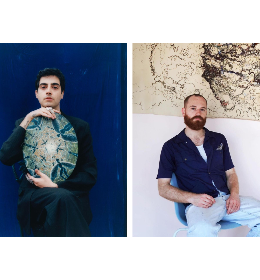She is also co-editor of AAA’s e-journal, Field Notes, and she has participated as a speaker in a number of forums around the world. She sits on the general and acquisition committees of M+ and the board of The Foundation for Arts Initiatives. Hsu received an Asian Cultural Council Starr Foundation Fellowship in 2003; RBS Coutts/Financial Times Women in Asia Award in 2009; and was selected as a 2013 Young Global Leader by the World Economic Forum.
At the time when AAA was created in 2000, the Asian art scene was very different from what we see today. What are the challenges that you have experienced with AAA?
I see challenges as being positive. I was very young at the time and my youth most probably helped me to overcome these challenges (Claire was only 24 years old when she founded AAA). Hong Kong was not a destination associated with art and certainly not with contemporary art. Evidently, an interest for contemporary art started to emerge in the 1980s. Some galleries and foundations started to take an interest in the subject, but the amount of interest generated was minimal. Through explaining AAA’s objectives, my representatives have understood the urgency of the situation. We had a strong conviction regarding the necessity for AAA to document the developments in the contemporary history of art scene in Asia. Today we have proved ourselves and we are supported in our mission. For example, 85% of our archives were donated or given to us.
AAA’s vocation targets Asia as a whole, but what do you really consider as Asia?
Our project "Mapping Asia" has really allowed us to define the notion of Asia. If you wish to define the borders of our project in a physical sense, then we consider Asia to cover from Turkey to South East Asia. Obviously it would be impossible to cover everything but we are at a capacity where we can open new doors to precise areas of interest, historically-speaking. In reality, the notion of Asia is evolving. For us there are various threads leading us through Asia in the contemporary art scene and our mission carries us to explore in even more depth. China is one of our centers of interest as Hong Kong is a part of China. India is also of interest for our projects. India’s history is rich and its colonial past can even be compared to that of Hong Kong’s. By taking an interest in India, it allows us to counterbalance the weight with China. We can then concentrate even more on these two sites in the future, but we are really looking to enrich the contemporary history art scene of the region.









